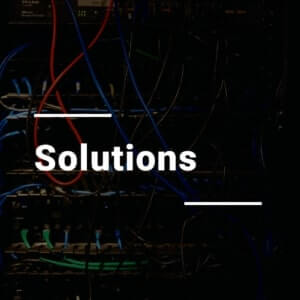Customer Conversations about High Performance Teams

One of the wonderful things about my job is I get to talk to a variety of customers. These discussions often have common themes. A few years ago, the main topic was about the transition to the cloud. In the last couple of years, it was how to thrive with primarily remote work. Lately, these discussions have shifted to how to best use our collaboration tools. This week, a customer told me “We want to be your best customers. How do we do it?”. Of course, there is no universal playbook for every customer, but I have found some core principles resonate, so I will share them below. Here is the one slide that I use in this part of the customer discussions:
Sharing Microsoft’s Current Learnings
We do have a lot of content and learning at Microsoft for a wide range of customers but there are two key resources people trying to foster high performance teams should look at:
- Work Trends Index – We do extensive research with customers and academics on key trends going on in work that we update regularly. We find this gives leaders current and powerful insights that can help make the business case and decisions for collaboration
- Microsoft Adoption Center – The cloud enables us to learn and adapt our tools faster than ever and we want to deliver the playbooks and content to help your teams understand and use the latest capabilities.
There is a lot more on Microsoft Learn and built into our guidance inside Viva Insights but these are the two that I would encourage people to monitor regularly. Beyond that I’ve distilled the guidance to what I think business and IT leaders and change agents can use to address the most frequent questions succinctly:
- Clarify what to use when
- Write a simple “how we work” plan together
What to Use When – Content, Channels, Meetings – In That Order (Mostly)
This is an area with lots of opinions – and I encourage you to read them all – including ones replying to this post :-). Here is my take from reading our research, talking to hundreds of customers, learning from our custom success teams and partners, etc. There will always be a lot of collaboration technologies – from Microsoft and across the industry – and the innovation and potential overlap will continue. We have seen the easier it is to adopt these technologies (Notes, Exchange, SharePoint, Slack, Teams, etc.) the more likely it is to have “tragedy of the commons” with overload. AI is helping modern collaboration products with organization and recommendations, but still, it is much better to have an intentional approach. All this hit a breaking point during the pandemic, where there was an overuse of online meetings and growth in the number of participants because of the need for social connections and fear of missing out. While our advice isn’t specific to Microsoft 365, I do think because we’ve integrated these collaboration tools with a consistent experience, security, search, notifications, platform, it is easier to do this with Teams. So here is what we do, I hear works best, and I recommend to customers:
- Content – Write things down – in a document (Word, PowerPoint, etc.) or a list (Excel, Lists, Planner, ADO, etc.). Async usually beats sync and structure usually beats unstructured. Don’t have the perfect be the enemy the good with too long a document or too complex a list schema but writing things is the best thing to drive clarity. Key to modern content collaboration tools is rather than have islands of threads, have them anchored with comments to the content elements – like we support in the Office apps including most recently Microsoft Lists. This can save enormous email and meeting time and discovery.
- Channels – Organize your conversations and content into channels. Email is here to stay and critical for open communications and convenient forwarding, but channels avoid everyone needing to organize and triage everything where there are recurring conversations. Structuring your work into channels upfront also makes it simpler for people outside or new to the team to get caught up with history. Reasonable use of @mentions is a strong signal for people what they should read and respond to vs. can defer and expect recommendations and search to help them as needed (and this is a key focus of our AI investments). The way to maximize productivity for an individual or team is not to try to read every one of their workgroup’s conversations.
- Meetings – We all know the two jokes about the long email could have been a five-minute meeting and vice versa. They are both true. While content drives clarity, meetings drive creativity, coaching, resolution of hard issues, and buy-in. Human connections are essential – they are just expensive if we let meetings – and the resulting fear of missing out – grow and grow. I’ll talk more about this in the next section, but there is nothing more important than being planful for 90% of your meetings so they don’t collectively take over everyone’s calendars.
Write a Simple “How We Work” Plan Together
As I was talking through this ordering of tools with our team and customers during the last several months, I realized it wasn’t enough. People could write lots of documents, create too many lists, have too many channels, have too many meetings, etc. We saw that internally and externally. As I mentioned earlier, the simpler cloud collaboration tools get in the industry, the more information is created – and the more overloaded people feel. After working on this space for a while, I realized all the adoption guidance on specific tools and features wasn’t enough. Each workgroup needed a simple plan that is well socialized on how they were going to work together. For a small company, this could be a single plan. For most medium-large sized organizations, you may need a plan at every couple of levels of scope. But it is important to write it down – what are the content, channels, and meetings that the team will use.
In our team, we update “how we work” in about 1-2 pages as part of our fiscal year plan that goes through a brainstorming, socialization, and closure process for a few weeks at all levels of the organization. We publish the plan and on our SharePoint team site including the key content (semester plan, status updates, Azure Dev Ops, OKRs, etc.) and meetings (experience, architecture, business reviews, etc.). We discuss and decide our norms. When is something appropriate to put on a list for our weekly meeting vs. deal with immediately as an ad-hoc thread? When should we have an emergency review vs. put as a topic in our monthly business review? Should we have a “No Meetings Friday”? How many people should go to what meeting? These are all judgement issues and putting some structure around “how we work” is far better than having it be all organic. Write it down. Keep it short. Get a few rounds of feedback before publishing.
Promote Change Agents and Storytelling
At first, I hesitated to publish this because it felt a bit obvious, but enough customers told me this simple framework for getting started was helpful enough that I decided to post it – and learn from the feedback. This is of course a change and change is hard. And change needs a change agent. And change can’t just be because some new technology is cool (and apologies for the times we fall into this trap). I would encourage you to be a change agent in your organization. Work with your team, in your language to write a short plan for how you work and what benefits you expect to get out of it – both for the output of the team and the sustainability for each member of the group. What are the key documents, lists, channels, and meetings you really need? How will you measure and celebrate success? Don’t be overly ambitious – try a few things, build momentum, and incorporate feedback until you can get on a yearly cycle of revisiting it as we do. Work to drive this across multiple organizations in your company sharing best practices, celebrating success, and creating a “collaboration center of excellence” that has the motivation to seek out innovative approaches and capabilities and share broadly the benefits. I know a lot of our biggest progress as a team came when we listened and learned from alternative approaches – not just inside but outside Microsoft as well.
Learning Together at Microsoft Ignite and Beyond
I hope you find this helpful in improving the productivity and satisfaction across your organization and for every member of your team. I look forward to reading the comments on this as well as getting your feedback on our next wave of updates. We’ll share more at our Microsoft Ignite Conference in October including the latest news across Microsoft 365 including Microsoft Teams, SharePoint, and Viva that we have designed based on working with customers around the world to make it easier than ever to foster high performance teams. Let’s keep learning together.













